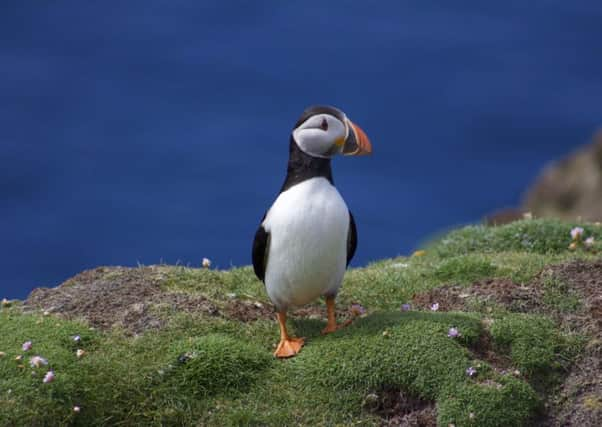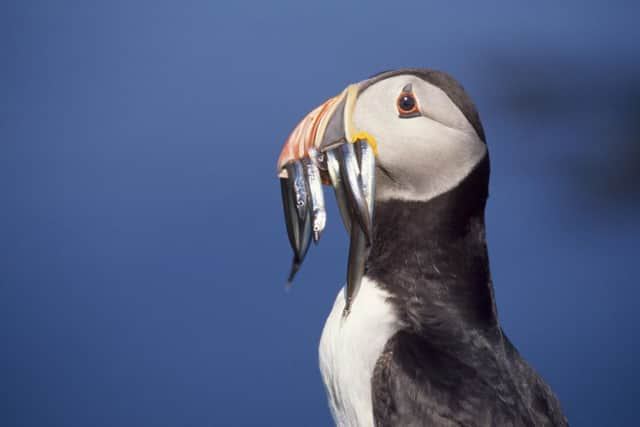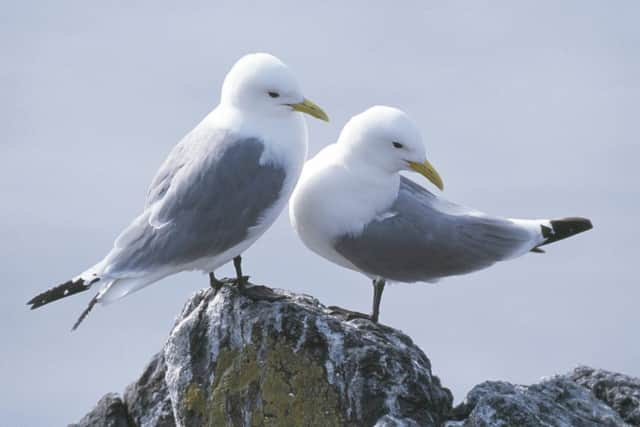Seabird numbers soaring on Yorkshire coast


A survey of a 17-mile stretch of the coastline, shows the number of gannets, guillemots, kittiwakes and razorbills has risen sharply since 2000.
Six experts took 253 hours to conduct the count during May and June, and they concluded 300,000 breeding seabirds, with 100,000 young birds, make their home on the cliffs.
Advertisement
Hide AdAdvertisement
Hide AdKeith Clarkson, seabird census project manager, based at RSPB Bempton Cliffs said: “Every year our senses come alive with the sights, sounds and smells of hundreds of thousands of seabirds that turn Bempton Cliffs into a bustling hive of activity – there are few more striking wildlife spectacles in the UK that fill your senses like the seabirds at Bempton.”


The latest figures show the numbers of gannets have increased from 2,550 to 13,400 pairs, guillemots from 31,000 to more than 57,000 pairs, kittiwakes from 42,000 to 45,300, razorbills jumped from 5,700 to 19,000 pairs and the number of puffins reached 1,440 pairs.
Despite the dramatic increase in numbers at the Yorkshire site over the past 17 years, the pattern isn’t mirrored around other parts of the UK’s shores.
Since 1982, the UK’s Seabird Population Indicator – based on breeding numbers for 13 species of seabird from a handful of colonies – has declined by 22%, with most of this decline taking place over the last 10 years, putting some species and sites in a vulnerable position.
Advertisement
Hide AdAdvertisement
Hide AdMr Clarkson added: “This latest survey highlights the international importance this stretch of coastline is for breeding seabirds. While the birds at sites such as RSPB Bempton Cliffs are doing well, the national indicator suggests that seabirds around the rest of the UK are struggling.


“It is vital for the future of our seabirds that we now have a national census to learn more about the colonies around the UK and to pinpoint our efforts to help save them.”
Funded by Natural England, the survey took a team of RSPB experts 34 days, including 214 hours spent on the sea counting the seabirds on the cliffs from a boat.
Anne Armitstead, Natural England’s Yorkshire coast project officer, said: “It’s wonderful that at Flamborough and Filey Coast numbers are increasing. Attracted by safe cliff nests and plentiful food out at sea, Flamborough is now the most important colony for gannets and kittiwakes in England.
“Sadly, elsewhere across the UK, seabird numbers are in decline and detailed bird surveys like this provide important evidence to inform our protection work with the RSPB and other partners.”